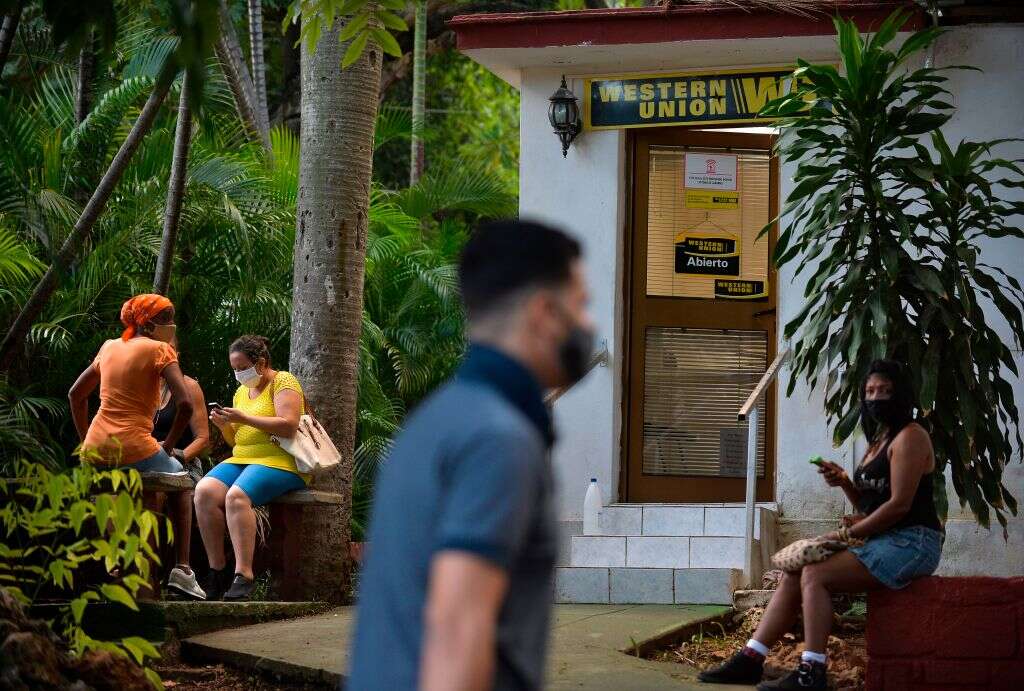
In the Philippines, working abroad is not only a material choice – it is a national imperative. Bereft of job opportunities at home, young Filipinos see a life overseas as their only opportunity for reliable and lucrative employment. In so doing, however, few forget their obligations to the families and communities they leave behind. In 2019, some $33.5bn was sent home by roughly 2.2 million Filipinos working abroad, now domestic workers in Italy, construction workers in Japan, or sailors in the Arctic.
Unsurprisingly, these remittances form an important part of the Filipino economy – as they do for countries around the developing world. From China to India, Mexico to Tonga, money sent home by migrant workers is a vital financial support mechanism, and one that has proven more resilient to economic crises than foreign direct investment (FDI) flows and Western overseas aid budgets. This is because remittances are, by their nature, counter-cyclical: if their country of birth is struggling, migrants will send more of their pay packets home.

Covid-19 should have upended that dynamic. Lockdowns imposed to thwart the virus occurred almost simultaneously in both host and recipient countries. Restrictions on movement prevented migrants not just from earning money but also from sending it home, whether through dedicated agents or informal channels. In April last year, The World Bank predicted that remittances to low and middle-income countries would contract by up to 20% – the sharpest fall in modern history.
By October, however, it had revised that figure to a much softer 7% fall. Over the course of the year, evidence emerged of the resilience, and even growth, of money transfer flows to the developing world. Families in Mexico, for example, received a total of $40.6bn in 2020, an 11.4% rise on the previous year; foreign exchange reserves in Bangladesh shot up to $44.02bn; while total remittances in the Philippines dropped by only 0.8%. The reason, said analysts, was simple: locked out of traditional means of remitting, migrants had embraced digital methods of sending money home – and all the manifest advantages that come with them.
For migrants unable to access cash desks or informal networks during lockdown, remittance apps allowed them to continue sending money for as long as they remained in work. Their popularity was registered almost immediately in the balance sheets of money transfer providers large and small. Western Union, for example, saw its digital money transfers climb by 35% last year, while smaller digital-only challengers such as Wise, Remitly and Azimo significantly expanded their customer bases.
What remains to be seen, though, is whether this trend will continue to accelerate after the pandemic. Many people sending money abroad, after all, felt well served by retail remittance services. Others, meanwhile, remain shut out from this digital revolution, unable to overcome the infamous ‘last mile’ between the institutions transferring the funds and their local communities. Only by overcoming these obstacles – psychological, regulatory and physical – can the full potential of digital remittances be realised across the developing world.
[Keep up with Tech Monitor: Subscribe to our weekly newsletter]
Pandemic drives digital priorities for money transfers
There are few more reliable sources of investment in the developing world than remittances. According to a report from the World Bank, the global flow of money transfers from migrant workers to low and middle-income countries reached approximately $551bn in 2019, having increased by a factor of three since the mid-1990s. This figure is several times larger than the world’s foreign aid budget, and a more stable source of investment than FDI flows. Most of it came from migrants based in the US, the GCC or the eurozone and flowed back to India, China, Mexico and the Philippines.
In that same report from 2019, the World Bank predicted remittances would rise to $574bn by the end of the following year, a number that the institution deemed ‘conservative’.
But few predicted quite how resilient remittances would be to Covid-19. Even as economic downturns gripped both host and recipient countries, remittance flows persisted. Not only was that altruistic impulse kicking in among communities of migrant workers, but they quickly adapted en masse to movement restrictions by sending money online. “We saw a lot of new entrants,” says Khalid Fellahi, president of consumer money transfer at Western Union.
As one of the best-known and oldest players in the retail market – the company was founded in 1851 in Rochester, New York, as a telegraph company – Western Union expected to lose out considerably in the pandemic. Instead, the company saw its proportion of customers initiating money transfers digitally climb to roughly a third of its total business. “This year, we ended up with about $850m in revenue” from digital business, says Fellahi. “We believe that we’ll be at over $1bn in revenue in the digital space by the end of 2021.”
Other remittance firms also reported massive rises in their digital customer base. In May, MoneyGram announced that transaction numbers on its main online platform had risen by 93% compared to the previous year, with growth exceeding 1,000% in select territories. Digital-only players, meanwhile, such as WorldRemit and Azimo, experienced year-on-year growth in customers of 150% and 100% respectively.
For Amil Aneja, this growth is indicative of a broader evolution in the remittances sector – and one that benefits migrants and recipient nations alike. “Digital solutions are generally faster, cheaper, more transparent than cash-based or agented solutions,” explains the lead specialist for migration and remittances at the United Nations Capital Development Fund (UNCDF).
It generally costs less to remit digitally than over the counter: according to the World Bank, the average fee for sending $200 is 6.8%, compared to the 3.3% average charge for digital transactions. That may not sound like a huge difference, but it does mean that any prolonged shift towards digital remittance solutions would result in a greater volume of funds being disbursed to communities throughout the developing world.
Digital money transfer services also enhance migrant access to the broader financial ecosystem. “It… allows better access to credit profiling for the migrants, if they have better access to banking services,” says Aneja. “They can then access financial products at affordable rates.” Some of these services are now being provided directly through money transfer apps. In July, for example, Western Union launched a pilot scheme in France for insurance products on its app, in collaboration with AXA.
Having digital solutions between a host and a home country strengthens anti-money laundering.
Amil Aneja, UNCDF
Recipient countries, too, have much to gain. Digital remittance solutions allow their “central banks to actually capture these remittance flows on their balance of payments”, says Aneja, which has a positive impact on their sovereign credit rating and allows greater access to forex for the country’s banking system. “Having digital solutions between a host and a home country also strengthens the anti-money laundering and [contractual disclosure facility] obligations and concerns that are out there, which are significant.”
Digital money transfers: the last mile
This all presupposes, of course, that this shift to digital is a permanent one. Western Union’s Fellahi has his doubts. He never expected the World Bank’s predictions of a 20% drop in remittance traffic to come true – customer behaviour in previous crises did not bear it out. Nor did he think that the pandemic would eradicate the use of physical cash in remittances: two-thirds of Western Union’s customers still rely on its retail money transfer services.
In fact, says Fellahi, the growth in its digital consumers did not come at the expense of its retail base. “The majority of those customers that we acquired online are actually new customers for us,” he says – people who saw a new and pressing need to send money home through formal channels. Fellahi suspects that many of these customers were either people who considered the economic emergency of last year as reason enough to remit for the first time or those who were suddenly forced out of unregulated hawala-type networks and into formal remittance channels.

Most of those Western Union customers that hopped from retail over to digital have expressed an interest in staying there, adds Fellahi. Even so, he says it would be a mistake to assume that these new users will continue to remit exclusively using online services. Multi-channel usage remains fairly common. “They do things online, and they do a little bit of retail sometimes,” says Fellahi. Cash has a certain solidity to it, a sense of security in knowing that your money is tangible, and agents can provide advice, useful if you’re sending larger sums of money abroad.
Bansi Ruparelia is one such customer. A graphic designer by training, Ruparelia is a casual user of Western Union’s services, sending sums of £70 or so to his cousin living in Mumbai to obtain products that he wouldn’t be able to source in London. After the UK’s first lockdown, going to the counter to remit that money felt impossible. Ruparelia found Western Union’s online remitting service and PayPal to be useful alternatives – the start of an embrace of e-commerce typical of many in the UK during lockdown. “It’s just become easier because it saves time,” he says. “I think for a lot of people, it’s all about time, now.”
To be honest with you, I would prefer to go over the counter. I don’t want to make a mistake online.
Bansi Ruparelia, graphic designer
Ruparelia hasn’t ruled out a return to retail, however. For sums larger than £70, he would much prefer to count on the assistance of a money transfer agent. “To be honest with you, I would prefer to go over the counter,” says Ruparelia. “I don’t want to make a mistake online.”
It isn’t just user nervousness in host nations that could stall remittances shift to digital. Internet access and financial services remain underdeveloped in many recipient nations compared to the host nations where migrant workers are based. This often means that whereas many remittances are initiated digitally, local communities have to traverse the ‘infamous’ last mile to get an agent to encash the amount – all for a nominal fee. As a result, recipients are denied the convenience of receiving funds at the precise time they may need them the most, and to a wider extent remain cut off from credit and financial networks.
National governments have been proactive in this regard, explains Asian Development Bank economist Aiko Takenaka. India’s Aaadhar biometric enrolment scheme, for example, has helped connect millions of villagers in remote areas of the country with modern financial services. “That ID is also used for remittances,” says Takenaka. “Many countries are looking at this Indian example to implement it in their own jurisdictions.”
Ultimately, however, this process cannot be forced. “I think that for really far too long, the focus has just been on moving money from point A to point B,” says Aneja, and not necessarily on deepening financial inclusion beyond that narrow definition. For remittances to continue being the economic lifeline that they are for many communities across the developing world, action must be taken on that front, and soon. Only then can what has remained a vital financial bond between migrants and their families realise its full potential.






